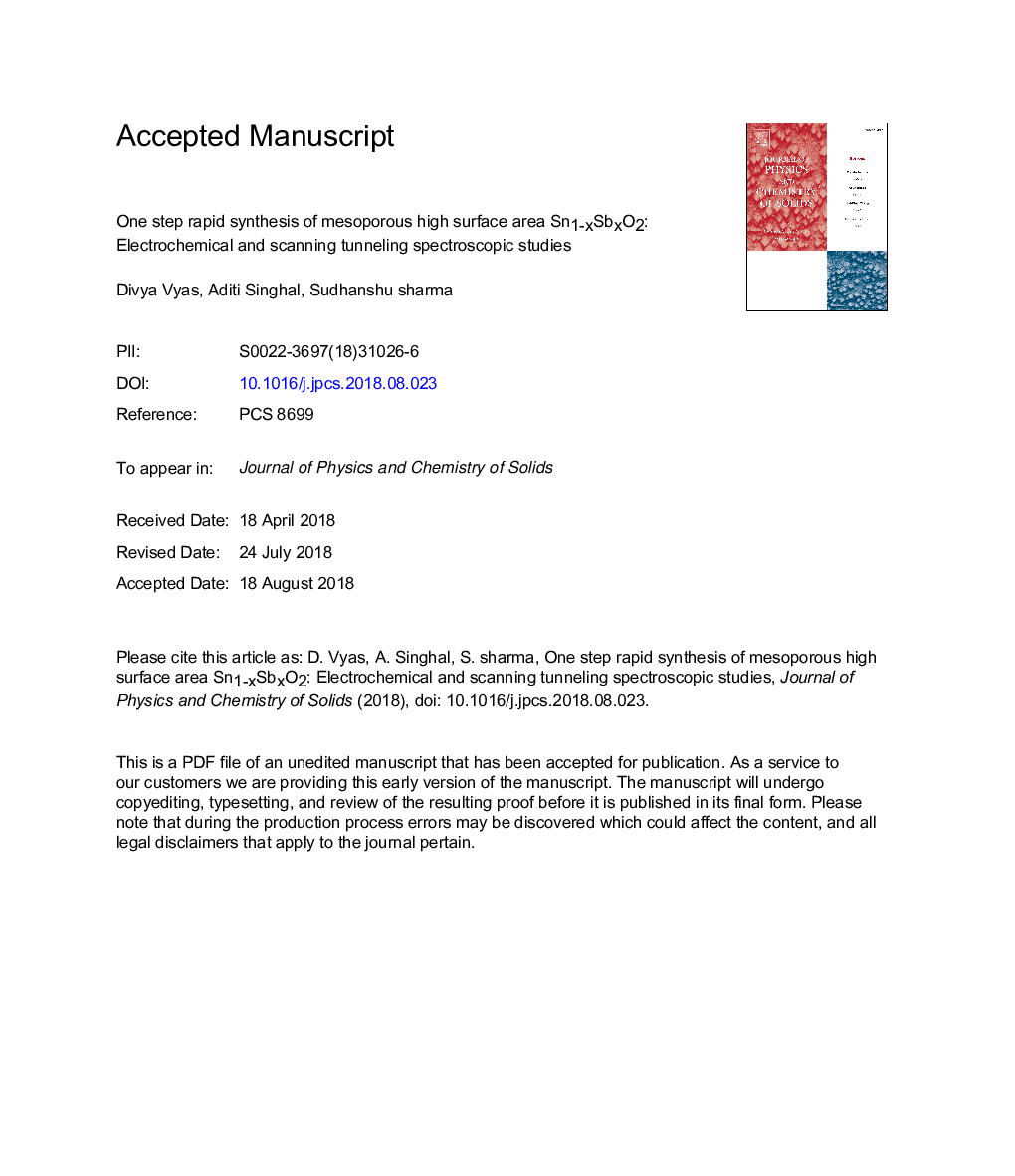| Article ID | Journal | Published Year | Pages | File Type |
|---|---|---|---|---|
| 11006858 | Journal of Physics and Chemistry of Solids | 2018 | 32 Pages |
Abstract
High surface area nanoparticles of antimony doped tin oxide are synthesized for the first time by one step solution combustion method using tin oxalate and antimony chloride as precursors. The synthesis method is rapid and gives particles of sizes 9-13â¯nm. The material has a specific surface area of 84â¯m2/g as estimated by Brunaure-Emmett-Teller (BET) model. The structural properties, surface morphologies, electrical and electrochemical properties are studied as a function of the dopant concentration. Effect of dopant concentration on X-ray diffraction (XRD) patterns shows some noticeable changes in particle size. Solid state UV spectroscopy demonstrates that due to the antimony doping, the band gap of SnO2 decreases significantly. Scanning tunneling spectroscopy (STS) and Hall Effect measurement are employed to characterize the electrical properties. The comparative study of Sn1-xSbxO2 (0.01â¯â¤â¯xâ¯â¤â¯0.05) indicates that the composition of Sn0.95Sb0.05O2 has the lowest resistance with the highest carrier concentration. Electrochemical properties of the material were analyzed by cyclic voltammetry in both acidic and neutral media showing the Sn0.95Sb0.05O2 with high electron transfer properties.
Related Topics
Physical Sciences and Engineering
Materials Science
Electronic, Optical and Magnetic Materials
Authors
Divya Vyas, Aditi Singhal, Sudhanshu sharma,
